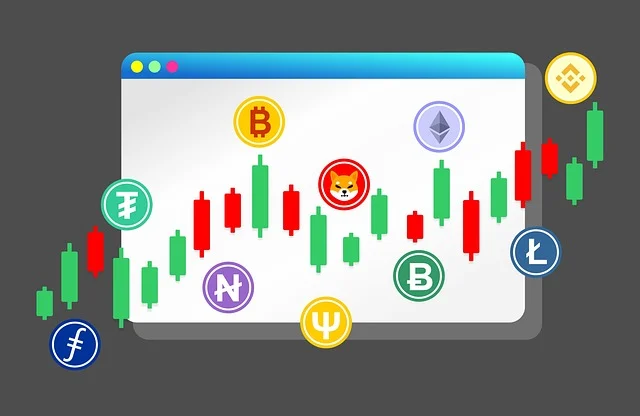I’ll show you exactly how to build a high-quality dividend stock portfolio from scratch. We’ll cover everything you need to know—from what dividend stocks are, how they work, and why you’d want them in your portfolio, to the step-by-step process of actually buying them.
Let’s get started.
What Is a Dividend Stock?
A dividend stock is a share in a company that pays out a portion of its earnings to shareholders. In other words, you earn money simply by holding the stock—no extra work required.
These payments result in passive income for you as the shareholder. Most dividend-paying companies are well-established with a strong track record of distributing earnings back to investors.
How Do Dividend Stocks Work?
Let’s break it down with an example:
- You buy 100 shares of a company at $10 per share (total investment: $1,000).
- The company pays a $0.50 dividend per share each year.
- For your 100 shares, you receive $50 in dividends annually.
- That’s a 5% dividend yield ($50 / $1,000).
- That $50 is your passive income—money you earn just for holding the stock.
Why Build a Dividend Portfolio?
- Regular Income. Instead of relying solely on stock price appreciation (which isn’t guaranteed), you get actual cash payments just for owning the stock.
- Safety & Stability. Dividend portfolios are historically more stable than the broader market. In uncertain or volatile markets, they act as a buffer against extreme downturns.
- Inflation & Market Resistance. By investing in blue-chip dividend stocks, you balance your portfolio against inflation and market fluctuations while still earning reliable income.
Pros of Dividend Investing
- ✅ Passive Income – Your money works for you with zero effort.
- ✅ Often Beats the Market – When you factor in dividends, returns can exceed average market gains.
- ✅ Lower Volatility – Dividend stocks grow slower but are more stable during downturns.
- ✅ Tax Advantages – Qualified dividends (from U.S. companies) are taxed at lower capital gains rates.
- ✅ Compound Returns – Reinvest dividends to buy more shares, accelerating growth over time.
Cons of Dividend Investing
- ❌ Slower Growth – Companies paying dividends reinvest less into their own growth.
- ❌ Dividends Aren’t Guaranteed – Companies can cut or suspend dividends if they struggle financially.
- ❌ Less Diversification – Many dividend ETFs focus on large-cap stocks, missing small/mid-cap opportunities.
Popular Dividend Stocks
You’ve probably heard of many of these:
- Johnson & Johnson (JNJ)
- Procter & Gamble (PG)
- Coca-Cola (KO)
- Verizon (VZ)
- 3M (MMM)
These companies have a history of consistent payouts.
How to Start Your Dividend Portfolio (Step by Step)
- Open a Brokerage Account
- Deposit Money into your account.
- Choose Your Investments (individual stocks or ETFs).
- Buy the Stocks—turn cash into dividend-paying assets.
Brokerage Sign-Up Process
- Webull: Get up to 6 free stocks when you open & fund an account.
- Robinhood: Get 1 free stock just for signing up.
- Moomoo: Deposit $100+ and get 5 free stocks + 1 Lucid Motors share.
(Note: The platform doesn’t matter much—buying stocks works the same everywhere.)
Key Metrics to Evaluate Dividend Stocks
- 📊 10-Year Average Return – Shows long-term profitability.
- 💰 Dividend Yield – Annual dividend payment relative to stock price. (Avoid ultra-high yields—they’re often traps!)
- 🌐 Diversification – Spread investments across industries (5-7 sectors is ideal).
- 💸 Expense Ratio (for ETFs) – Keep fees low (<0.1% is great).
- 📈 Total Return – Stock price growth + dividends.
- 📉 Earnings Per Share (EPS) – Higher EPS = more reliable dividends.
What to Avoid in Dividend Investing
- 🚫 Dividend Traps – Stocks with extremely high yields (20-60%) are usually unsustainable.
- 🚫 Overconcentration – Don’t put everything into one sector.
- 🚫 Ignoring Financial Health – Always check:
- P/E Ratio (is the stock overvalued?)
- Free Cash Flow (can the company afford its dividends?)
- Debt-to-Equity Ratio (too much debt = risk).
Dividend Investment Strategies
- Dividend Growth Investing. Invest in companies that increase dividends yearly. Best For long-term wealth building.
- Dividend Capture Investing (Risky!). Buy stocks before dividend payouts, then sell. Inefficient and often unprofitable.
- Dividend Reinvesting (DRIP). - Automatically reinvest dividends to compound returns.
Final Thoughts
Dividend investing is not a get-rich-quick scheme—it’s a long-term strategy for steady passive income. Over time, a well-built dividend portfolio can generate enough cash flow to live off of.
For example:
A $1M portfolio with a 3% average yield = $30,000/year in dividends.
Next Steps
- Open a brokerage account
- Start small, diversify, and reinvest dividends.
- Stay consistent—avoid emotional trading.
Good Reads

Learn how staking works, how you can profit, what are the risks, and what to avoid.

There are 9 million open jobs in the U.S

If you’ve ever tried to get your savings in order, chances are you’ve failed more than once

What if I told you that with just 10 ETH today, you could build a passive income stream of over $1,800 per month—in just 10 years?

Dividend investing isn’t about being flashy or trendy

If you're serious about learning how to invest, start by understanding the basics—like dividend stocks

What if I told you there's a way to transform a simple $10,000 investment into a machine that could pay you thousands of dollars in monthly income during retirement?

Understanding Municipal Bonds: A Direct Guide for Smart Investors

Municipal bonds are far from flashy—but that’s their strength

Learn how to invest in REITs effectively, avoid common mistakes, and build a diversified real estate portfolio with long-term passive income potential.
